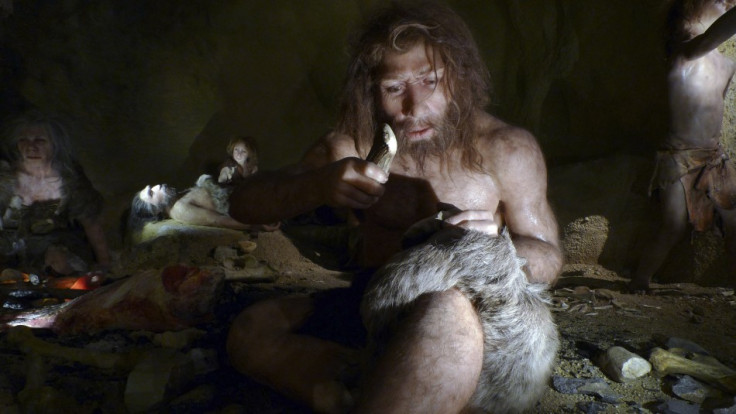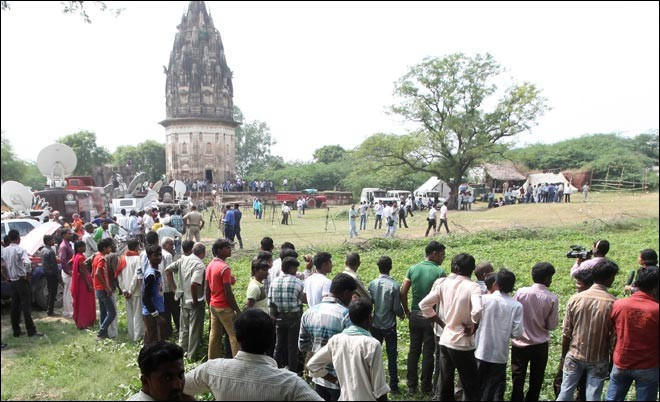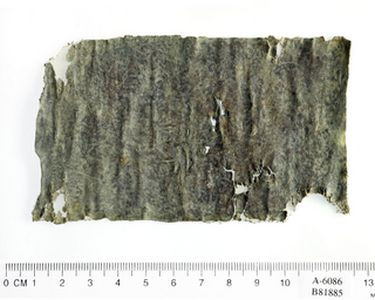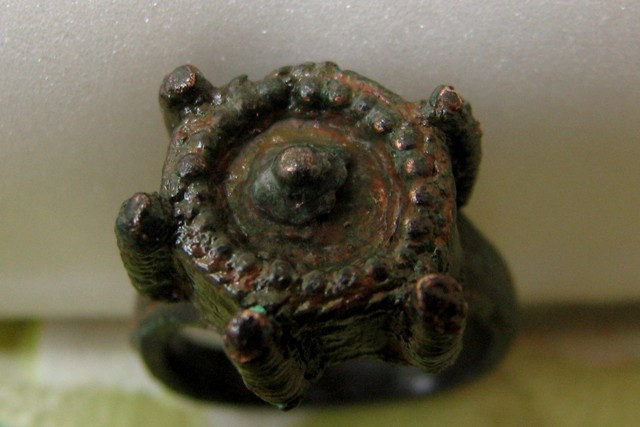Top Ten Archaeological Finds of 2013 [PHOTOS]

As much as the year 2013 was about many breakthroughs in science, it was also about some extraordinary discoveries in archaeology.
On New Year's Eve, here's a look at the top ten archaeological digs of 2013.
King Richard III Grave
After several hypotheses and investigations, it was proved that the grave excavated at a car park in Leicester is of King Richard III. The human remains were found in September 2012 but the University of Leicester confirmed only in February 2013 that DNA from the skeleton matches that of two of Richard III's family descendants.
"It is the academic conclusion of the University of Leicester that the individual exhumed at Grey Friars in August 2012 is indeed King Richard III, the last Plantagenet King of England," Richard Buckley, the lead archaeologist on the Search for Richard III, announced in a statement.
Roman eagle statue

Archaeologists at the Museum of London Archaeology (MOLA) unearthed an extraordinarily well-preserved 2,000-year-old sculpture of an eagle at the site of a Roman cemetery, where a 24/26 Minories hotel is now coming up.
The eagle has been described as "amongst the very best statues surviving from Roman Britain". The 65cm tall and 55cm wide sculpture of the eagle firmly clasping a writhing serpent in its beak indicates typical Roman symbols.
Neanderthals exposed

The year also saw a great deal of revelations about the Neanderthals. While the first genome report on the closest relatives of modern humans was published, researchers proved that the Neanderthals inbred and had interspecies sexual relationships and they buried their dead.
India's dig for 1,000 tons of gold

Perhaps the most dramatic archaeology story came from the northern Indian state of Uttar Pradesh where a sage's dream of a hidden trove of 1,000 tons of gold prompted excavation at the ruined Unnao Fort. The 10-day dig that caused a huge media frenzy was finally stopped after the Archaeological Survey of India confirmed that the excavation did not unearth any treasure.
Curse tablet

A rolled-up sheet of lead bearing a Greek inscription was discovered in an archaeological excavation at the Giv'ati parking lot in the City of David. According to the Israel Antiquities Authority, the sheet is a curse tablet that was probably written by a professional sorcerer or wizard.
Largest crusader hospital

An eleventh century hospital structure dating to the Crusader era (1099–1291 CE) was unearthed in the Old City of Jerusalem in August. The site, located in the Christian Quarter near David Street in the Old City, is said to be the largest hospital of the Crusader period ever found in the region.
An earthquake in 1457 CE likely buried the Crusaders' hospital in ruins until a part of it was opened as a market in the 19th century under the Ottoman Empire. The site will be used as a place for fine dining attracting tourists, pilgrims and locals.
Poison ring

In yet another remarkable discovery in August, archaeologists in Bulgaria found a fourteenth century bronze ring that might have been used for killing people in power and politics in the era. The exquisitely crafted ring, probably worn on the little finger of the right hand by a male, has a hole with a cartridge which suggests that it was used for pouring poison into drinks.
Ancient vineyards in Spain

Archaeologists at the University of Basque Country claimed in December to have found traces of 1,000-year-old vineyards in the medieval village of Zaballa in Alava province in northern Spain. According to archaeologists, the terraced fields of Zaballa are perfectly visible in the landscapes and suggest that they were devoted to intensive vine cultivation.
Sudan's Mummies in crypt with mysterious inscriptions
December saw another extraordinary announcement in archaeology. It was about a medieval tomb having seven male mummies and walls covered with mysterious inscriptions all over excavated in a monastery in Sudan. The inscriptions were probably written to protect the tomb and those buried there from evil, according to archaeologists.
Mysterious tombs in Siberia
In the most recent archaeological announcements of 2013, researchers at the Russian Academy of Sciences said that they have found 3,500-year-old tombs in Siberia's Staryi Tartas village. In about dozens of graves, skeletal remains of couples buried facing each other and holding hands were found.
© Copyright IBTimes 2025. All rights reserved.






















